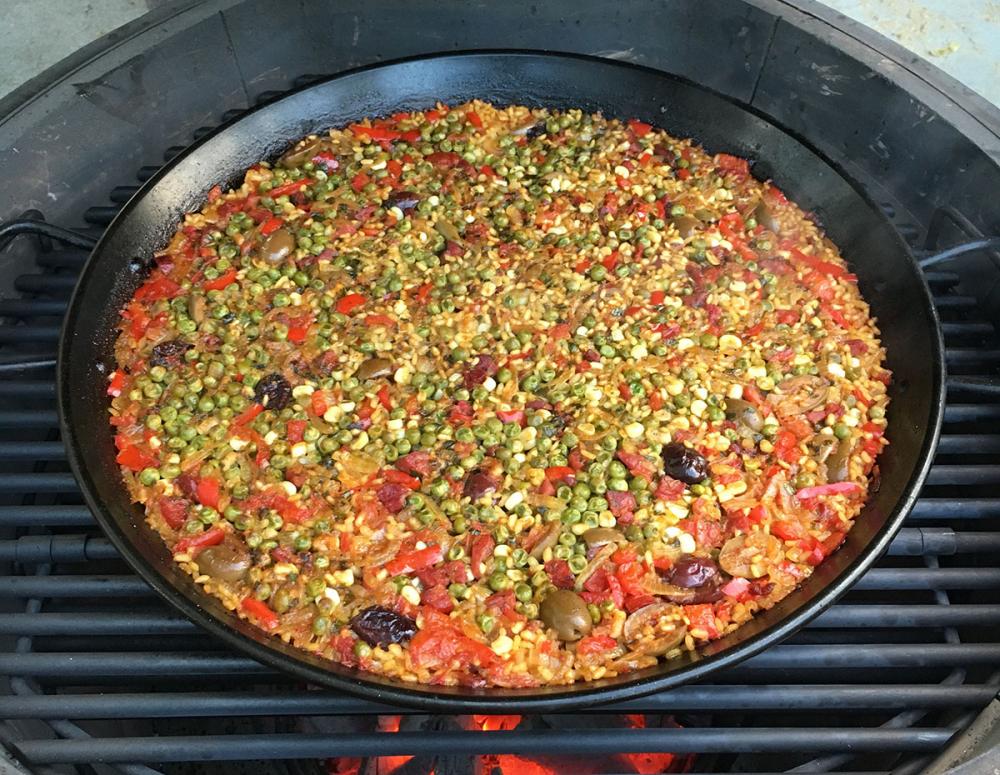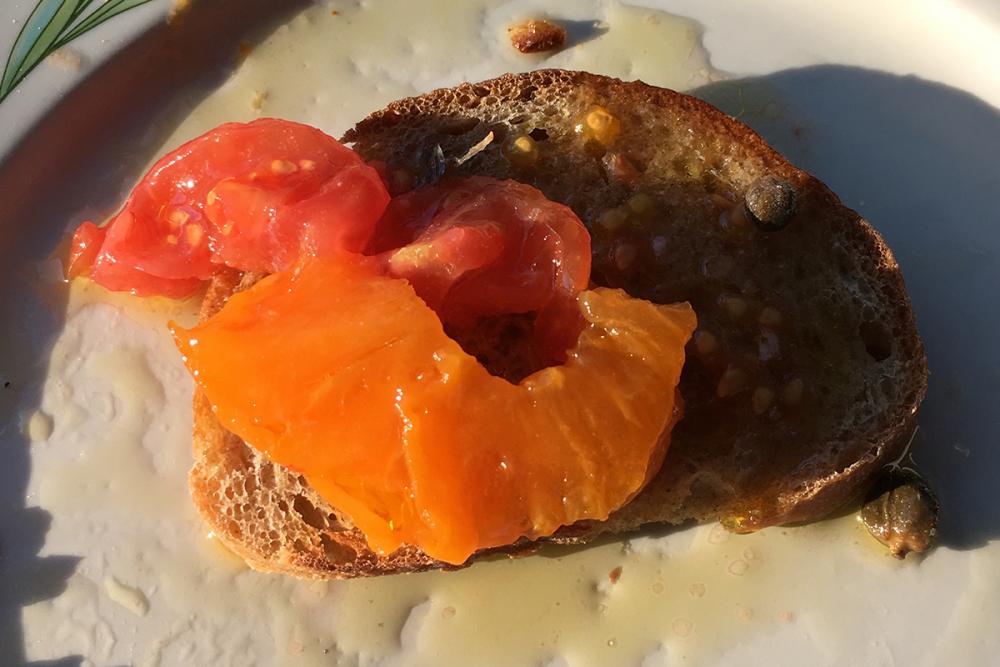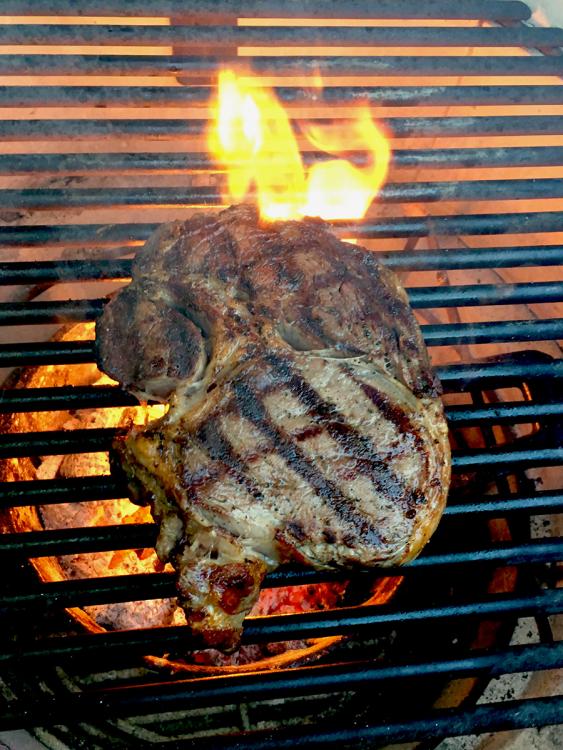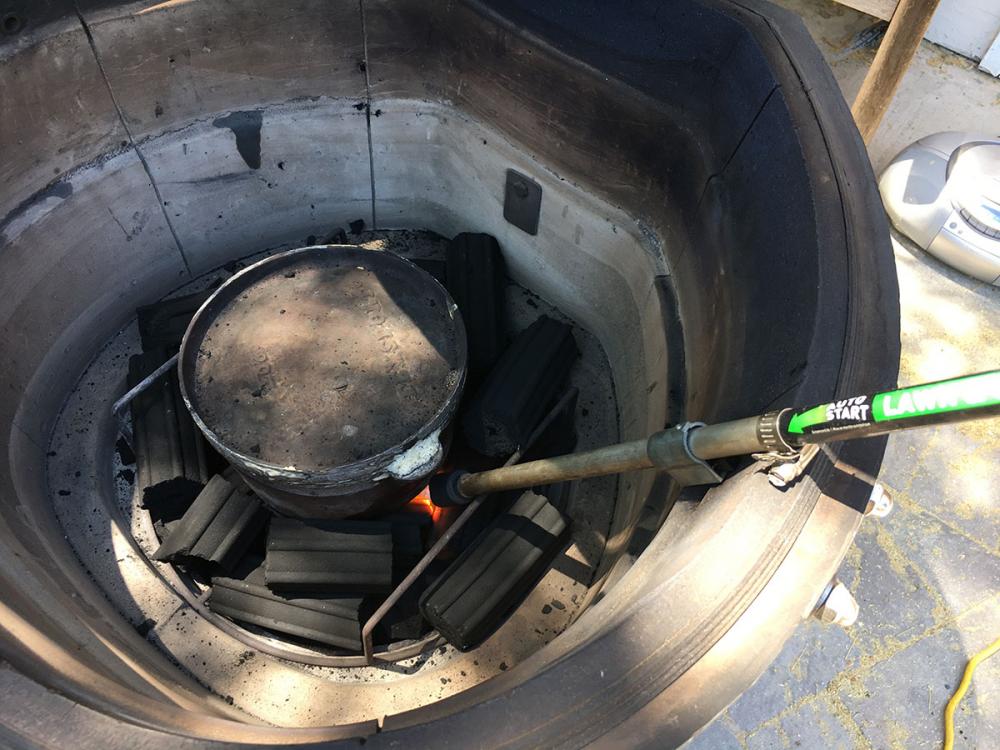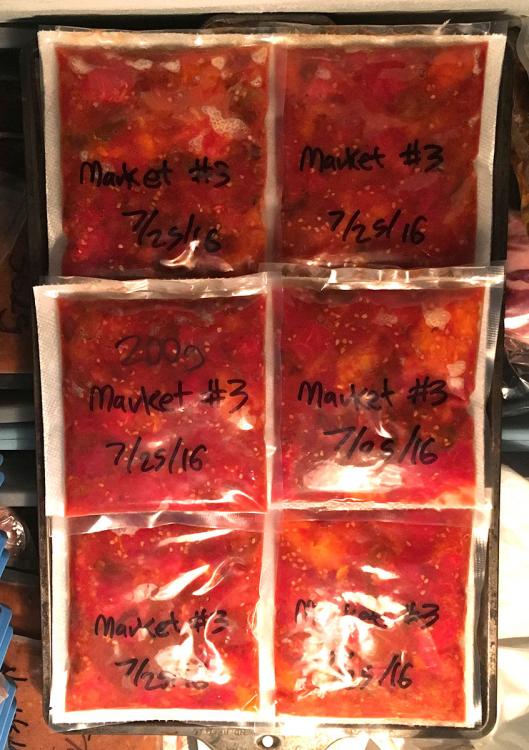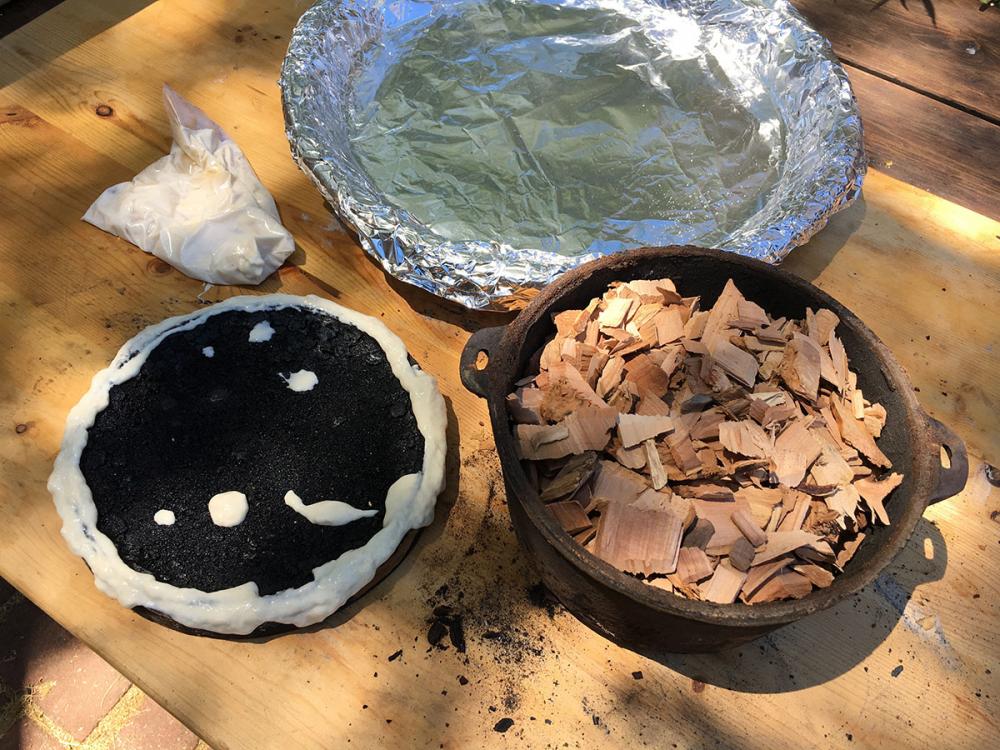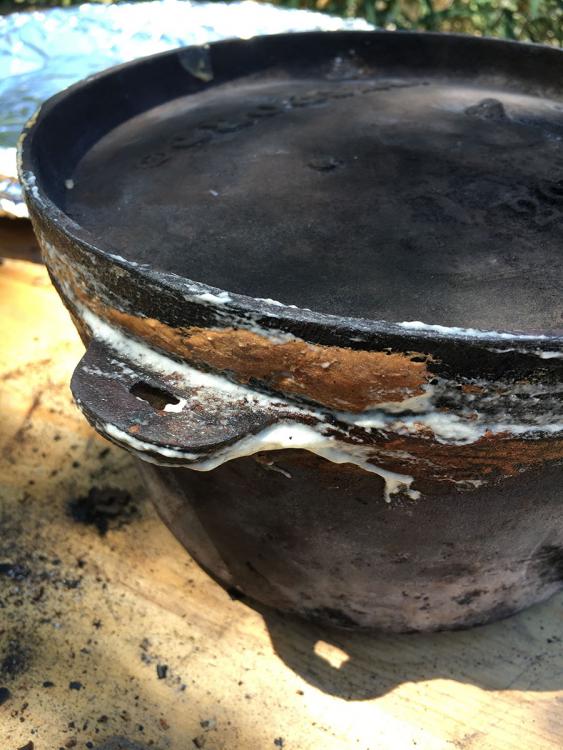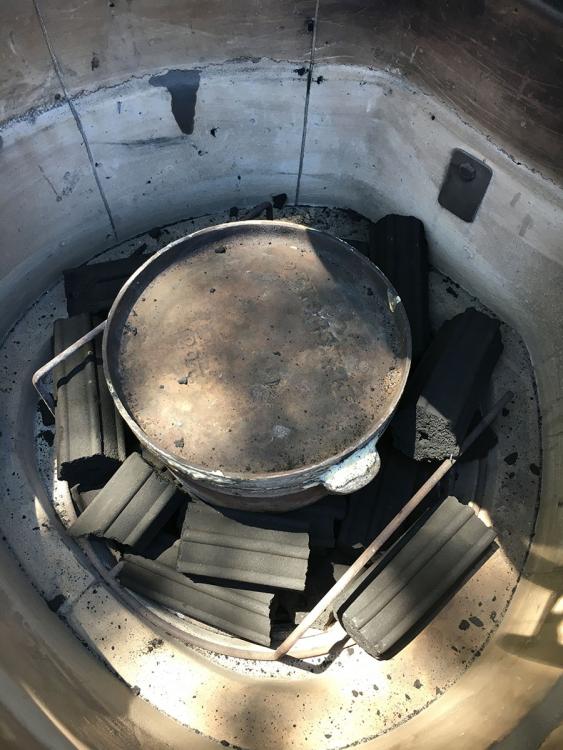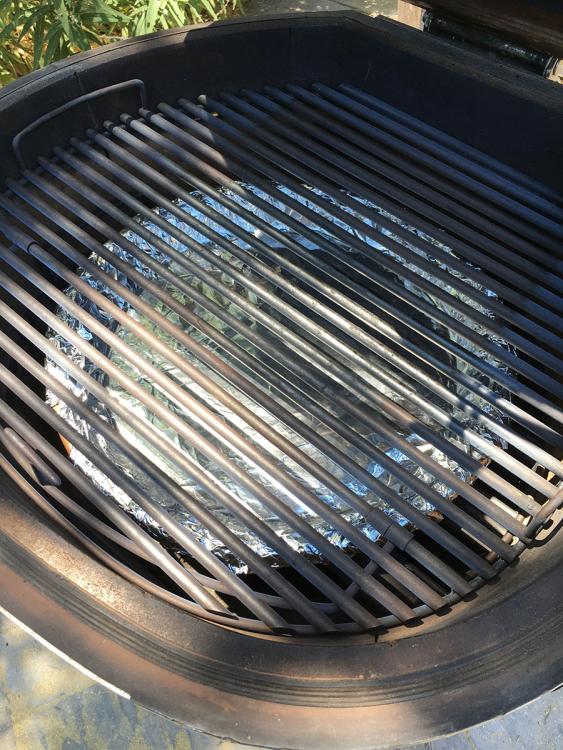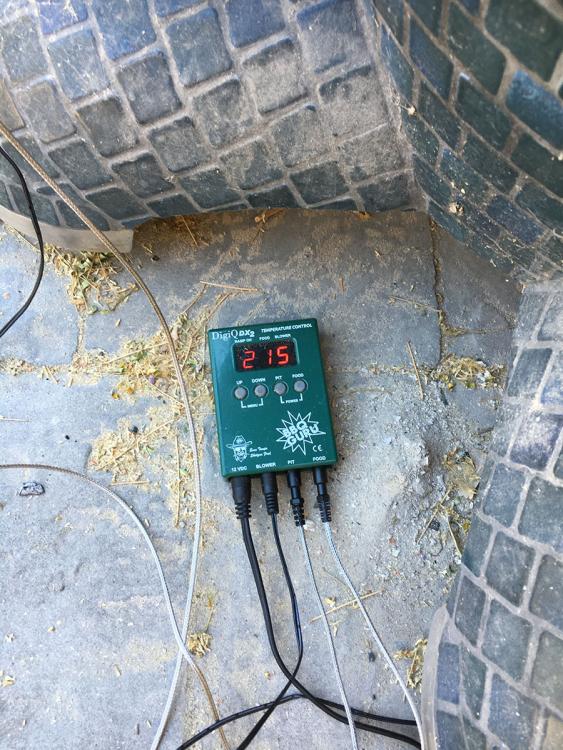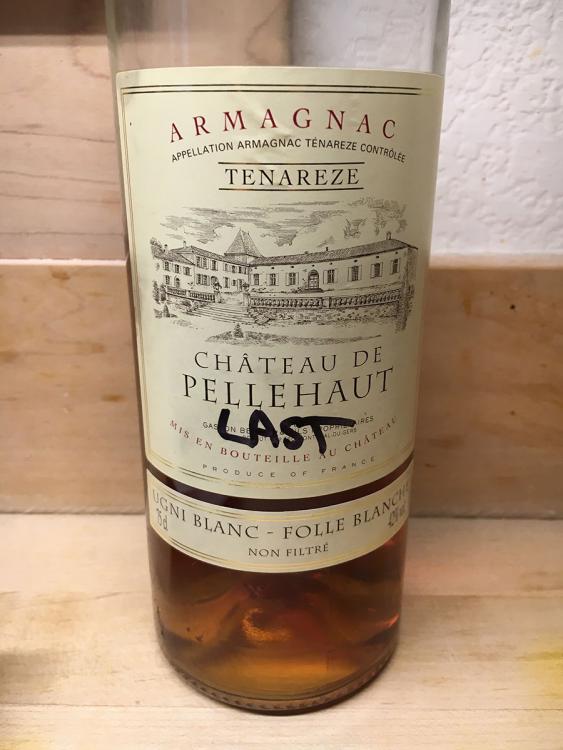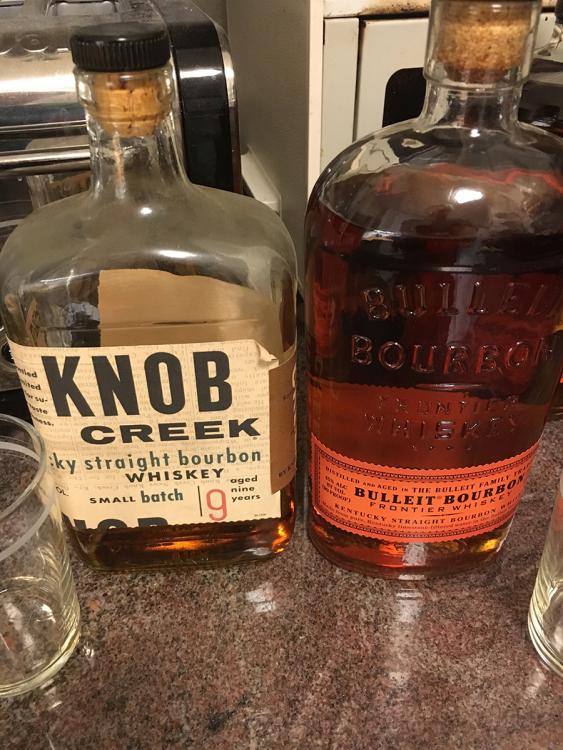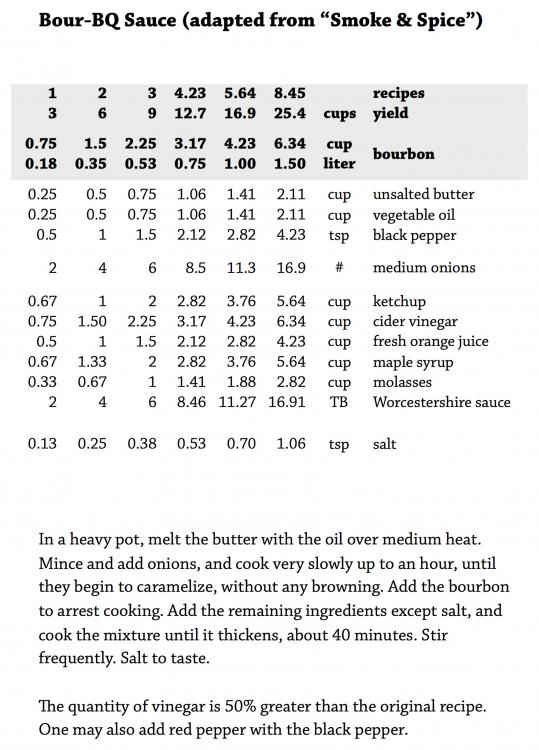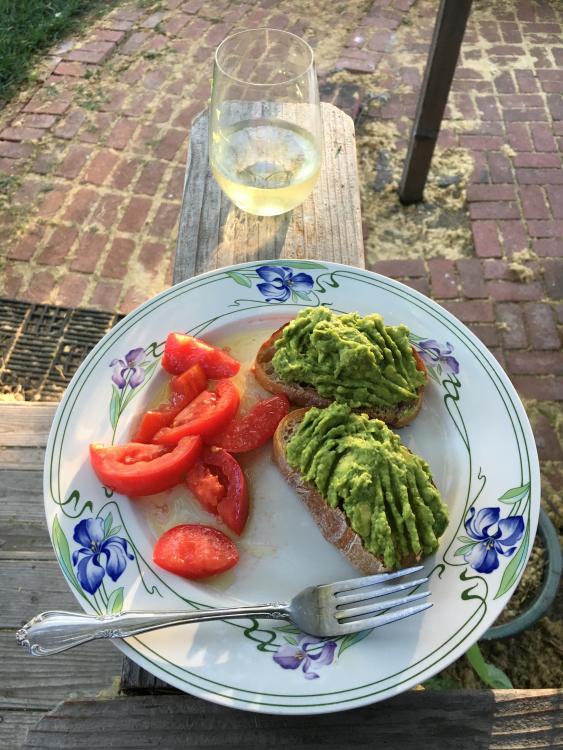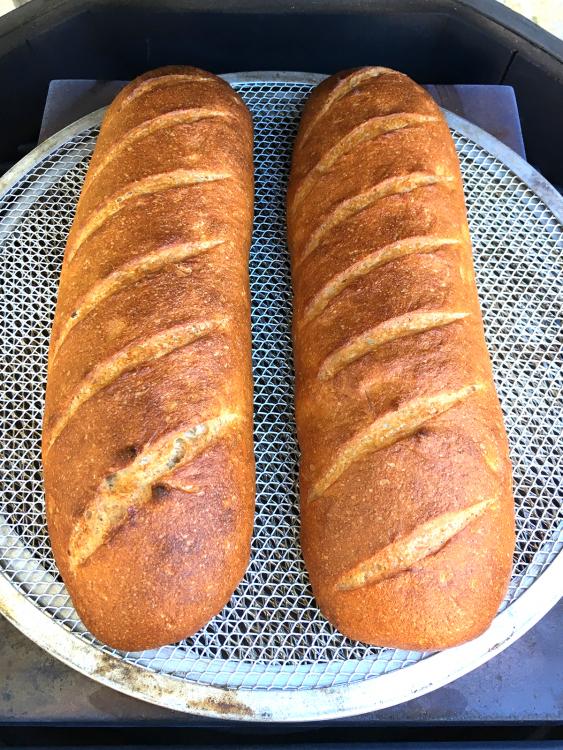-
Posts
1,739 -
Joined
-
Last visited
-
Days Won
53
Content Type
Profiles
Forums
Events
Everything posted by Syzygies
-
If the lid leaks too fast, or comes ajar, one gets a bonfire, way too much nasty smoke. The idea is to prevent combustion inside the pot. I came up with this design after experiments with making charcoal. A classic way to make charcoal is to start a fire underneath a sealed chamber filled with wood, with holes on the bottom. Soon the wood gases from the chamber catch fire, and the starter fire underneath isn't needed. When the gases go out, one has charcoal inside the chamber. If there was instead a leak allowing convection through the chamber, one has ash inside the chamber. The idea of the holes in the bottom is to pass the wood gases through our charcoal fire, to use them as fuel and burn them off. This is a grace note of uncertain benefit. It is possible that an unsealed lid, and no holes on the bottom, would work nearly as well. I can't suggest that now without getting pilloried, after encouraging others to destroy cast iron pots with their drills? Think of it like adding the egg to cake mix, isn't it nice being involved? I've read of various very expensive setups at high end barbecue restaurants, such as Danny Meyer's Blue Smoke. Were it me, I'd design a central chamber for heating wood as one makes charcoal, and feed the fumes to "gas" ovens throughout the kitchen. I'm surprised no one has tried this. Different gas sources require different treatment (not all propane torches can handle MAPP gas), and there could be residue buildup one doesn't get with natural gas, but this seems like an engineering problem worth solving. (I doubt one could even get permits for this in a city like New York.) I got a kick out of Austin Franklin's book proposing that I make a cooker from a 1,000 gallon propane tank using "basic metal-working skills." If I had these skills and enough space, this would be my idea for offset firebox cooking. Of course, Dennis has tried this, his new cold smoker is roughly this idea. For cold smoking, one doesn't need to burn the wood gases, just expose the meat to them. For hot smoking we have other clean fuel sources. Relying entirely on wood gases for heat might be too much smoke (in my idea above, one could blend at will with natural gas, to get the smoke flavor just right) and would require a larger chamber.
-
Aaron Franklin of Franklin Barbecue favors a third option: Pink (uncoated) butcher paper. The white butcher paper is coated and no better than foil, but the pink partially breathes. I used to be in the diehard "no foil" camp after my initial experiments, but Aaron Franklin has won me over to at least trying pink butcher paper every now and then. His book goes into details. Bear in mind his needs. His restaurant cooks a slew of meat, to sell over several hours until gone. Paper may be ideal for this uncertain delivery window. One might be able to do better without paper, with an absolute target schedule in mind. I'm not sure, and the pink butcher paper is fun, one more prop to signal to my guests that they're going to like this. (Cooking is theater.)
-
Dennis is quite eloquent about the purpose of the basket splitter: Make sure all air passing through the KK passes directly through the charcoal. I'm also reminded of the design of cabin wood stoves like the Vigilant stove. If fuel savings is a primary goal, then one wants to let in enough oxygen to generate desired heat, with absolutely no more airflow than necessary. A rock and a hard place, for without airflow there's no new oxygen for the charcoal, but wasted airflow is expelling wasted heat. Using a BBQGuru for low and slow naturally adopts a conservation protocol. I hadn't thought explicitly about conservation for higher temps, but I'm surely thinking that way now that I'm hooked on KK coffee charcoal. A companion goal is moist meat. Excess airflow is unwanted drying. One gets the moistest meat with a full cooker, but for a given load, one also wants to minimize airflow. So, yes, thank you for directing our attention to this, and kudos for spelling out the protocol to achieve this. I've sort of been doing this unconsciously, but it always helps to actually think about it.
-
The coffee charcoal is also great for paella. Very responsive to changes in airflow, to moderate the heat.
-
I first had limoncello two decades ago, walking back from a snorkling cove on Panarea. Buried in a tiny shop's chest freezer was an unmarked bottle. A shot really hit the spot on a hot afternoon. The next summer I was renting a house in California with a large Meyer lemon tree. I made extract for limoncello from about 60 lemons. Harried, trying to pack out of there, something possessed me to try putting the spent zest through the garbage disposal. Expensive mistake. The summer after that, I brought large bottles of limoncello to a Fire Island beach house. 3 AM rooftop parties definitely confirmed the "dancing on the roof of a taxi" reputation limoncello has in New York. We ran out in the wee hours one Saturday, and I was pressed to produce another bottle. I tried slipping in my experimental Key Lime batch without warning. Picture half a dozen partiers spitting out in shock, at once. A decade ago in Ravello on honeymoon, we asked if the limoncello was homemade. "Sempre a casa!". There was also a small factory in town, very different style. I haven't tried sous vide for this, though it's a great idea. I lean toward cold extraction, but my insight from these experiments were [1] The fruit matters. Everything else is secondary. Limoncello is a crime of opportunity; one can't make the best limoncello from the lemons available on demand, this has to be a reaction to unbelievable lemons. [2] Use twice as much rind as the standard multiple week steeping recipes (found in many books and online) but steep for only a few days. [3] While I call for Everclear for its extraction power, my friends from the beach understand alcohol better than I ever will. The voices of experience say that Absolut is the least expensive vodka worth drinking. Not for flavor, but for the all important "digestibility", however one wants to put this. My recipe: 750 ml Everclear (151 proof grain alcohol) 24 unwaxed organic Eureka lemons 500 ml water 2 cups cane sugar Wash lemons. Peel just the yellow part of the zests, into a 2 quart ball jar. Add Everclear. Let rest for 3 to 4 days, to make lemon extract. Boil water with sugar to make simple syrup, let cool. Strain lemon extract into simple syrup, bottle, and store for serving in one's freezer. Makes 1.5 liters.
-
I ferment a few gallons each year of chiles for hot sauce, sourced in or near Oakland, CA. The ideal would be Tabasco-style, but chiles are difficult to keep pure. Just as dogs in some countries all look the same, there's a generic "Thai" chile endemic in markets in coming months, which looks nothing like the chiles I saw in Thailand. Perhaps there are ag rules that inhibit shipping (unlike say Texas or Florida Red Grapefruits, one can pay steep shipping to send anywhere) but I've never figured out a way to purchase a case of New Mexico's finest online.
-
We had bread for dinner tonight, too. The chickens next door like nothing better than when we toss over anchovy bones.
-
I'm getting to really like sous vide beef or pork, grilled briefly over coffee charcoal. Wow. Tonight, ribeye.
-
Awesome! I'm not opposed to using a stand mixer, but recently I always work the dough by hand. Many years ago Laurie and I went to seminar on artisan loaves, and the takeaway was "Yep, doughs can be messy wet to work with. Get over it! Did you ever mud a wall? Some tasks in life are like that!" (I paraphrase greatly.) So I'm totally used to this dough. I tend to bake at 450 F for 35 minutes. It of course depends on the oven. Sometimes I juggle onto a pizza screen outdoors on the KK, if my stone got too hot. Yours didn't. Indoors or out, I use plenty of steam. 400g or so of water or ice, onto a giant cast iron skillet with two rolls of SS chain. This idea popularized by Bouchon Bakery, though it predates them. The advantage of a thin block of ice (freeze in ziplock or chamber vacuum bag) is the delay, time to close the KK before several KK volumes of steam are produced. Commercial bread ovens do this by design at the start of each bake. I saw recently that Tartine Bakery is moving to freshly ground flours. There's a lot of misinformation and confusion about "green" flours. Bought flour has been aged for weeks, and fresh flour can be challenging. I've seen it said that very freshly ground flour was fine, but that wasn't my experience. Hence the ascorbic acid, which I learned from a professional book by Michel Suas. Unfortunately there's also plenty of misinformation about ascorbic acid, people try way too much then recoil in horror. Suas proposes 20 parts per million, I settled on 40 ppm. One mixes ascorbic acid with white flour 1:20, very thoroughly, then mixes that 1:20 with white flour, for the 1:440 AA mixture listed in the recipe. That turns parts per million into something one can measure and use; I call for 12 grams. If you didn't use steam or ascorbic acid, then you surely have a gift for baking. That bread looks great. And I know it tastes great. We've bought both Tartine and Acme bread recently in the Bay Area, to tide us by, and couldn't wait to get back to this bread.
-
Cookin with my baby she's got great big crust Shes long, lean, and lanky and aint she great to eat Shes my baby and I love her just the same Crazy bout that pastry cause Calzone is her name Calzone Calzone What makes your big crust so hard? I love her. I love her just the same Crazy bout that pastry cause Calzone is her name You know what mama told me? Mama said son... Keep away from that cooker - she's gonna take all your time Hey, hey, hey boy.... don't laugh about my mama - you hear that? Hey man I told you man.... You don't know what you doin boy - don't laugh about my mama Calzone Calzone What makes your big crust so hard? I love her. I love her just the same Crazy bout that pastry cause Calzone is her name
-
I don't. Above say 275 F, the smoke gets too intense. Somewhere after that, the escaping gases ignite, and the smoke pot becomes a self-sustaining fire. This is exactly one way to make charcoal, something I experimented which lead to the smoke pot idea. For faster cooks I absolutely love grilling over KK coffee lump charcoal.
-
That would be Harbor Freight.
-
I might have knocked the lid handle loop off. Long ago, I don't recall for sure, pictured is the original two quart smoke pot. I nestle the pot into the coals so it just fits under the lower grate. I have been using a 16" terra cotta plant saucer, wrapped in foil, on the lower grate as both heat deflector and drip pan. They break every year or two, and one just did. The drip pans that Dennis designed look nice...
-
I deliberately linked to an Amazon search rather than a specific model. It's a commodity market and I'm unaware of quality differences. The ones I actually own are from Sorbent Systems. They're a bit pricier (and not as convenient as Amazon) but great quality. Same commodity looks. The next question is size. The 8" sealer does 6" wide plain Chamber bags like these 6" x 12" bags, but nothing else. That covers all my tomato and stock needs. Very rarely I wish it could seal wider bags. A huge advantage of sealing in food-safe sous vide pouches like these is being able to go straight from freezer to water bath, to thaw. Then nick a corner for stock, and pour into the dish as needed. One can even reseal.
-
I was just using an impulse sealer last night. Here is 28 lbs of tomatoes partly dried and sealed into 14 packets, now freezing on a cookie sheet to keep them flat.
-
I own a chamber vacuum sealer in one kitchen, the best external clamp sealer ever made in the other kitchen, and $30 impulse sealers like these (Amazon) in both kitchens. Once one gets the hang of it, for soft, wet foods it is far easier to burp the air out of plain chamber vacuum bags while sealing them with the impulse sealer. This is easier to figure out by experimentation than any wordy description. One squishes the bag to eliminate buried air pockets and to wet the inner walls. Drape the bag, above the contents, over the sealing bar, and pull down gently. Now squeeze the contents while adjusting how one secures the bag, so one end then the other over the sealing bar becomes the weak spot where air escapes. When virtually all the air has escaped, seal on an appropriate sealing setting. Wordy, yes. The driver never gets carsick, you have to figure this out by trial and error. Easy to master, and afterwards, much quicker than any active vacuum machine. I cannot word this strongly enough. There is a pronounced tendency for people to believe in the method they know (particularly if it's expensive and they already bought it). As a research mathematician I cannot afford this psychological inertia, so I regularly go around inside my head wildly swinging a baseball bat, to break up habits. Yes, I have recently tried both an external clamp vacuum machine and a chamber vacuum machine for this purpose, and neither holds a candle to learning the manual dexterity to burp air using a $30 impulse sealer. This method is also ideal for stock. The methods I have tried for freezing stock, over forty years of cooking, are a museum of horrors. Reuse a yogurt or Chinese takeout container, and blast off the ice barnacles with hot tap water before use? Yeah, that was me thirty years ago, and I try to keep my cringing to myself in other peoples' kitchens when I still see similar. Plain chamber vacuum bags, and a $30 impulse sealer, is THE way to go for freezing stock. Consider the more efficient use of freezer space a bonus.
-
I use a two quart Dutch oven, with three 1/8" holes drilled in the bottom. One hole might do, but I want to hedge my bets on a hole getting blocked, and the lid blowing loose. Similarly, not everyone feels the need to glue the lid on with flour paste. The paste reminds me of Morocco, and one really doesn't want the lid to come loose.
-
-
Huh. I thought these were the affordable choices! I have to be able to drink the leftovers. I won't pretend that I can't navigate the cheap shelves at BevMo. There was a math department Christmas party some years ago, the department admin tried to wrap things up by 10pm. I ducked out with a determined look, so the grad students held off on bolting for the local bars. I returned with a "handle of Jack". The bottle lasted twenty minutes, and the legend will last twenty years. Then I bolted with the grad students for the local bars. Here is our "cooking Armagnac". I highly recommend it if you can find it. Have you seen the prices on the good stuff?
-
Getting four pork butts ready for Laurie's Greek Orthodox Church on Sunday. I cooked for them last year and they asked me back. Taking one for the team, trying bourbons for the Bour-BQ sauce from "Smoke & Spice". I'm not normally one for such adornments, but a friend made this and it's awesome; we both make it now for large events. I'll mix some in with the pulled pork for "sloppy joe" style sandwiches, with a layer of coleslaw. That works.
-
Recipe attached. 45% red winter wheat, 10% rye, 10% soft wheat berries. A lighter blend for summer, we up the whole grains in winter. Sourdough Bread (45-10-10-10).pdf
-
-
That's how I've used it. Buy pork chops at local farmers market from Massa Organics. Freeze. Thaw in sous vide circulator at 0 C. Brine four hours in light brine (1/2 cup salt per gallon water, less sugar). Sous vide an hour to 132 F. Grill over KK coffee charcoal. This was my favorite beef or pork in the last year; we restocked. As pictured the mini basket comes quite close to the lower grill, so fat flares up pretty easily. Next time I'll try the main grate and trim more fat first. A lot of thought goes into "ideal" KK use: Heat soaking the walls. A basket splitter that forces airflow through the charcoal. Yet don't let the best be the enemy of the good, and fire up a Weber for quickies like this. The mini basket inside a KK is easier and more secure. It works; there's plenty of heat for such an application.
-
I too use a torch: A pair of long neck weed burners (I kept the first after it stopped lighting; only one needs to light) with hose clamps on the neck so they perch on the KK rim and under the charcoal basked rails. Propane is fine, though MAPP gas burns hotter. I used to use 99% rubbing alcohol. Pour a generous quantity on the charcoal, wait for it to soak in, and toss in a match. The womp will get the neighborhood dogs barking, empty every overhead power line of birds, and get new neighbors to come check if everything is ok. It also does an adequate job of starting the fire. The fumes aren't great. Ethanol is relatively safe because it's the simplest alcohol, looking at the molecular structure. Whether burned or ingested, it breaks down into simpler compounds. Isopropyl alcohol is has a more complicated molecular structure, so breaks down into toxins when ingested. It doesn't burn as cleanly either: Instead of H20 and CO2, one gets the chemical equivalent of unwanted pennies in your pocket as change: Copious amounts of undetectable carbon monoxide. However, if you stand upwind and don't manage to off the neighbor's chickens, it all burns off cleanly and one has a fire. Torches are easier.




